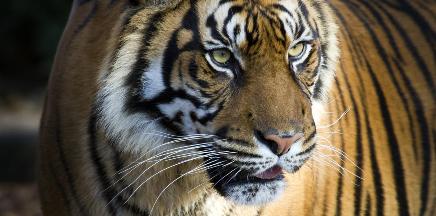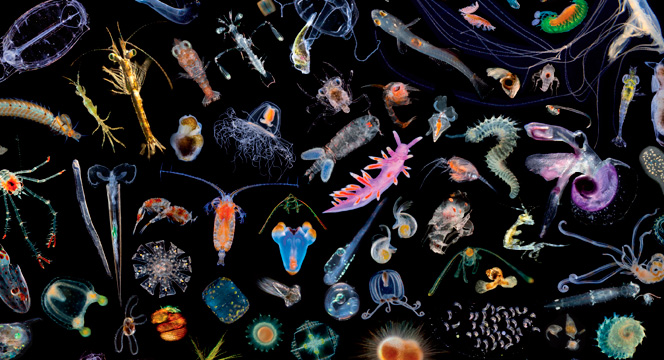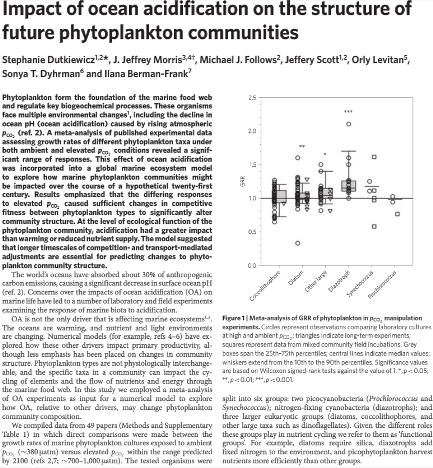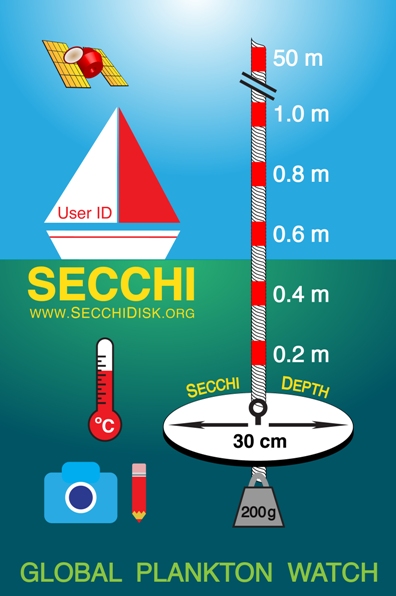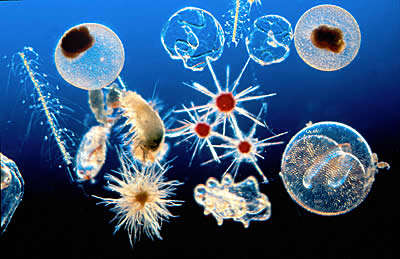File:Racing Extinction websiteplankton 2.jpg: Difference between revisions
Siterunner (talk | contribs) No edit summary |
Siterunner (talk | contribs) No edit summary |
||
| (10 intermediate revisions by the same user not shown) | |||
| Line 1: | Line 1: | ||
[http://www.racingextinction.com '''www.racingextinction.com'''] | [http://www.racingextinction.com '''www.racingextinction.com'''] | ||
<big>''' 'Tiny Little Ones', the UNSEEN Endangered Species v the LARGE "Charismatic" Species'''</big> | |||
GP360: The standard approach, when looking at threatened species, is to focus on well-known larger species. The [https://en.wikipedia.org/wiki/IUCN_Red_List '''Red List'''] is widely known for its work to identify species at risk of extinction. Its work forms [http://www.iucn.org/about/work/programmes/species/our_work/the_iucn_red_list/ the basis for many biodiversity preservation efforts. The focus on [https://en.wikipedia.org/wiki/The_world's_100_most_threatened_species larger, readily identified animals] is the norm and these species, often mammals, provides just a part of the larger picture of our threatened environment. | GP360: The standard approach, when looking at threatened species, is to focus on well-known larger species. The [https://en.wikipedia.org/wiki/IUCN_Red_List '''Red List'''] is widely known for its work to identify species at risk of extinction. Its work forms [http://www.iucn.org/about/work/programmes/species/our_work/the_iucn_red_list/ the basis for many biodiversity preservation efforts. The focus on [https://en.wikipedia.org/wiki/The_world's_100_most_threatened_species larger, readily identified animals] is the norm and these species, often mammals, provides just a part of the larger picture of our threatened environment. | ||
| Line 26: | Line 26: | ||
[[File:Racing Extinction websiteplankton.jpg]] | [[File:Racing Extinction websiteplankton.jpg]] | ||
<big><big>'''SMALL v LARGE SPECIES'''</big></big> | <big><big>'''SMALL v LARGE SPECIES'''</big></big> | ||
| Line 33: | Line 35: | ||
'''Phytoplankton account for half of all photosynthetic activity on Earth...''' | '''Phytoplankton account for half of all photosynthetic activity on Earth...''' | ||
'''Phytoplankton are responsible for much of the oxygen present in the Earth’s atmosphere – half of the total amount produced by all plant life.''' | '''Phytoplankton are responsible for much of the oxygen present in the Earth’s atmosphere – half of the total amount produced by all plant life.''' | ||
* http://en.wikipedia.org/wiki/Phytoplankton | |||
○ | ○ | ||
'''Marine Biodiversity Strongly Linked to Ocean Temperature''' | '''Marine Biodiversity Strongly Linked to Ocean Temperature''' | ||
| Line 43: | Line 49: | ||
The researchers found striking similarities among the distribution patterns, with temperature strongly linked to biodiversity for all thirteen groups studied. These results imply that future changes in ocean temperature, such as those due to climate change, may greatly affect the distribution of life in the sea. | The researchers found striking similarities among the distribution patterns, with temperature strongly linked to biodiversity for all thirteen groups studied. These results imply that future changes in ocean temperature, such as those due to climate change, may greatly affect the distribution of life in the sea. | ||
http://www.sciencedaily.com/releases/2010/07/100728131707.htm | * http://www.sciencedaily.com/releases/2010/07/100728131707.htm | ||
<big><big>'''Plankton'''</big></big> | <big><big>'''Plankton'''</big></big> | ||
| Line 64: | Line 70: | ||
<big>GLOBAL PLANKTON WATCH | <big>GLOBAL PLANKTON WATCH</big> | ||
THE GLOBAL SEAFARER STUDY OF | THE GLOBAL SEAFARER STUDY OF MARINE PHYTOPLANKTON | ||
The phytoplankton in the sea account for approximately 50% of all photosynthesis on Earth and, through the food web they support, they underpin the marine food chain. | The phytoplankton in the sea account for approximately 50% of all photosynthesis on Earth and, through the food web they support, they underpin the marine food chain. | ||
| Line 77: | Line 81: | ||
Full instructions for the project are included in the free Secchi App. | Full instructions for the project are included in the free Secchi App. | ||
[http://www.secchidisk.org/ SECCHI DISK / Planet Citizen Science] | |||
Press Release -- Scientists fear the population of the microscopic beings is in decline due to rising sea temperatures and, if true, that could have consequences for every aspect of marine life. | Press Release -- Scientists fear the population of the microscopic beings is in decline due to rising sea temperatures and, if true, that could have consequences for every aspect of marine life. | ||
| Line 84: | Line 90: | ||
Dr Kirby added: "The Secchi Disks are still used by marine scientists to study phytoplankton but there are too few scientists to survey the world's oceans as well as we would wish. This app enables seafarers around the world to take part in a science project and if we can just get a small percentage of the global population of sailors involved, we can generate a database that will help us understand how life in the oceans is changing. It would help us learn much more about these important organisms at a crucial time when their habitat is altering due to climate change." | Dr Kirby added: "The Secchi Disks are still used by marine scientists to study phytoplankton but there are too few scientists to survey the world's oceans as well as we would wish. This app enables seafarers around the world to take part in a science project and if we can just get a small percentage of the global population of sailors involved, we can generate a database that will help us understand how life in the oceans is changing. It would help us learn much more about these important organisms at a crucial time when their habitat is altering due to climate change." | ||
○ | ○ | ||
Phytoplankton obtain energy through the process of photosynthesis and must, to survive, live in the well-lit surface layer (termed the euphotic zone) of an ocean, sea, lake, or other body of water. | |||
Phytoplankton account for half of all photosynthetic activity on Earth. Thus phytoplankton are responsible for much of the oxygen present in the Earth’s atmosphere – half of the total amount produced by all plant life. | |||
Global warming of oceans, seas, and fresh water will have life and death impacts on phytoplankton -- and as a result directly impact the essential food chains that plankton support and the enabling oxygen that humans and all life forms need to breathe. | |||
* http://en.wikipedia.org/wiki/Phytoplankton | |||
: [[File:Plankton.jpg]] | |||
○ | |||
[[Category:Anthropocene]] | |||
[[Category:Atmospheric Science]] | |||
[[Category:Climate Change]] | [[Category:Climate Change]] | ||
[[Category:Earth Science]] | |||
[[Category:Ecoregions]] | [[Category:Ecoregions]] | ||
[[Category:Extinction]] | [[Category:Extinction]] | ||
[[Category:Global Warming]] | |||
[[Category:Ocean Ecosystem]] | [[Category:Ocean Ecosystem]] | ||
[[Category:Ocean Science]] | [[Category:Ocean Science]] | ||
[[Category:Oceans]] | [[Category:Oceans]] | ||
[[Category:Planet Citizen]] | |||
[[Category:Planet Citizens]] | |||
[[Category:Planet Citizens, Planet Scientists]] | |||
[[Category:Whole Earth]] | |||
Latest revision as of 14:33, 8 October 2019
'Tiny Little Ones', the UNSEEN Endangered Species v the LARGE "Charismatic" Species
GP360: The standard approach, when looking at threatened species, is to focus on well-known larger species. The Red List is widely known for its work to identify species at risk of extinction. Its work forms the basis for many biodiversity preservation efforts. The focus on [https://en.wikipedia.org/wiki/The_world's_100_most_threatened_species larger, readily identified animals is the norm and these species, often mammals, provides just a part of the larger picture of our threatened environment.
The large 'charismatic', or 'iconic' species, most often eclipse recognition of rarely considered species that are not even 'known' or known to be in danger...
The reality is that much of the extinction in our era is of the small species, the lesser known, unknown and unconsidered species, whether in the rich biospheres of the rainforest or the oceans, the micro-organisms are at risk and in peril of collapse.
When we speak of Plankton, as a profoundly critical keystone species, the food chain of the oceans begins with plankton, yet the disruption of the atmosphere and the heating of the ocean, or acidification, will have great consequences to the Phytoplankon, flagellates who cannot move with their limited locomotion system... Acidification of the oceans and the increases of heat or strengthened suns rays due to changes in atmospheric conditions and UV radiation can have deadly consequences to the 'least of and smallest of' the species -- and as a result effect the larger systems in ways that science is only now beginning to measure and monitor.
We are, our species is, beginning to understand that as the small animals comprising the foundations of the 'food chain' and biosphere systems are disrupted, endangered and/or destroyed, the rest of the food chain and integral ecological connections between species will be disrupted, endangered, and/or destroyed.
This is a great challenge of the era in which we live... loss of biodiversity and a 'ripple effect' over time, a threat environment that demands strategic environmental security as a key goal, as a policy objective beginning with awareness and policies and practices of sustainability.
SMALL v LARGE SPECIES
Phytoplankton obtain energy through the process of photosynthesis and must therefore live in the well-lit surface layer (termed the euphotic zone) of an ocean, sea, lake, or other water.
Phytoplankton account for half of all photosynthetic activity on Earth...
Phytoplankton are responsible for much of the oxygen present in the Earth’s atmosphere – half of the total amount produced by all plant life.
○
Marine Biodiversity Strongly Linked to Ocean Temperature
ScienceDaily / 2010 — In an unprecedented effort published online by the international journal Nature, a team of scientists mapped and analyzed global biodiversity patterns for over 11,000 marine species ranging from tiny plankton to sharks and whales.
The researchers found striking similarities among the distribution patterns, with temperature strongly linked to biodiversity for all thirteen groups studied. These results imply that future changes in ocean temperature, such as those due to climate change, may greatly affect the distribution of life in the sea.
Plankton
2015 - Big Trouble Ahead for Ocean Plankton
Sobering news: Ocean acidification will likely kill off some phytoplankton species and let others thrive, while warming waters will likely cause mass phytoplankton migrations toward the poles. In short: The base of the marine food web could be in for some serious upheaval in the coming decades. Here’s more from MIT News:
“I’ve always been a total believer in climate change, and I try not to be an alarmist, because it’s not good for anyone,” says (Dr. Stephanie) Dutkiewicz, who is the paper’s lead author. “But I was actually quite shocked by the results. The fact that there are so many different possible changes, that different phytoplankton respond differently, means there might be some quite traumatic changes in the communities over the course of the 21st century. A whole rearrangement of the communities means something to both the food web further up, but also for things like cycling of carbon.”
Dutkiewicz and her colleagues studied 154 published experiments...
GLOBAL PLANKTON WATCH
THE GLOBAL SEAFARER STUDY OF MARINE PHYTOPLANKTON
The phytoplankton in the sea account for approximately 50% of all photosynthesis on Earth and, through the food web they support, they underpin the marine food chain.
Living at the surface of the sea the phytoplankton are particularly sensitive to changes in sea surface temperature.
We need to know much more about these changes and you can help by making a simple piece of scientific equipment called a Secchi Disk and using the free Secchi App.
Full instructions for the project are included in the free Secchi App.
SECCHI DISK / Planet Citizen Science
Press Release -- Scientists fear the population of the microscopic beings is in decline due to rising sea temperatures and, if true, that could have consequences for every aspect of marine life.
Plankton biologist Dr Richard Kirby, who is leading the study, said: "As the phytoplankton live at the surface of the sea they are being affected by rising sea temperatures due to climate change. A scientific paper published in 2010 suggested the ocean's plankton population had declined by as much as 40 per cent since 1950. Like all marine creatures, phytoplankton have a preferred optimum sea temperature no matter where they are in the world and we need to know more about how they are changing in order to understand the effects on the ocean's biology.” To check the levels of phytoplankton in our oceans, marine experts have developed a free smart phone app for sailors and fishermen to use wherever they are in the world.
Dr Kirby added: "The Secchi Disks are still used by marine scientists to study phytoplankton but there are too few scientists to survey the world's oceans as well as we would wish. This app enables seafarers around the world to take part in a science project and if we can just get a small percentage of the global population of sailors involved, we can generate a database that will help us understand how life in the oceans is changing. It would help us learn much more about these important organisms at a crucial time when their habitat is altering due to climate change."
○
Phytoplankton obtain energy through the process of photosynthesis and must, to survive, live in the well-lit surface layer (termed the euphotic zone) of an ocean, sea, lake, or other body of water.
Phytoplankton account for half of all photosynthetic activity on Earth. Thus phytoplankton are responsible for much of the oxygen present in the Earth’s atmosphere – half of the total amount produced by all plant life.
Global warming of oceans, seas, and fresh water will have life and death impacts on phytoplankton -- and as a result directly impact the essential food chains that plankton support and the enabling oxygen that humans and all life forms need to breathe.
○
File history
Click on a date/time to view the file as it appeared at that time.
| Date/Time | Thumbnail | Dimensions | User | Comment | |
|---|---|---|---|---|---|
| current | 01:45, 10 November 2015 | 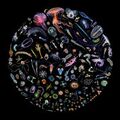 | 170 × 170 (10 KB) | Siterunner (talk | contribs) | [http://www.racingextinction.com '''www.racingextinction.com'''] ○ ○ ○ ○ ○ ○ ○ ○ ○ ○ ○ ○ ○ ○ ○ ○ ○ ○ ○ '''LARGE "CHARISMATIC" SPECIES''' GP360: The standard approach, when looking at threatened species, is to fo... |
You cannot overwrite this file.
File usage
The following 4 pages use this file:
